A continental counterpart to the submarine volcanoes…
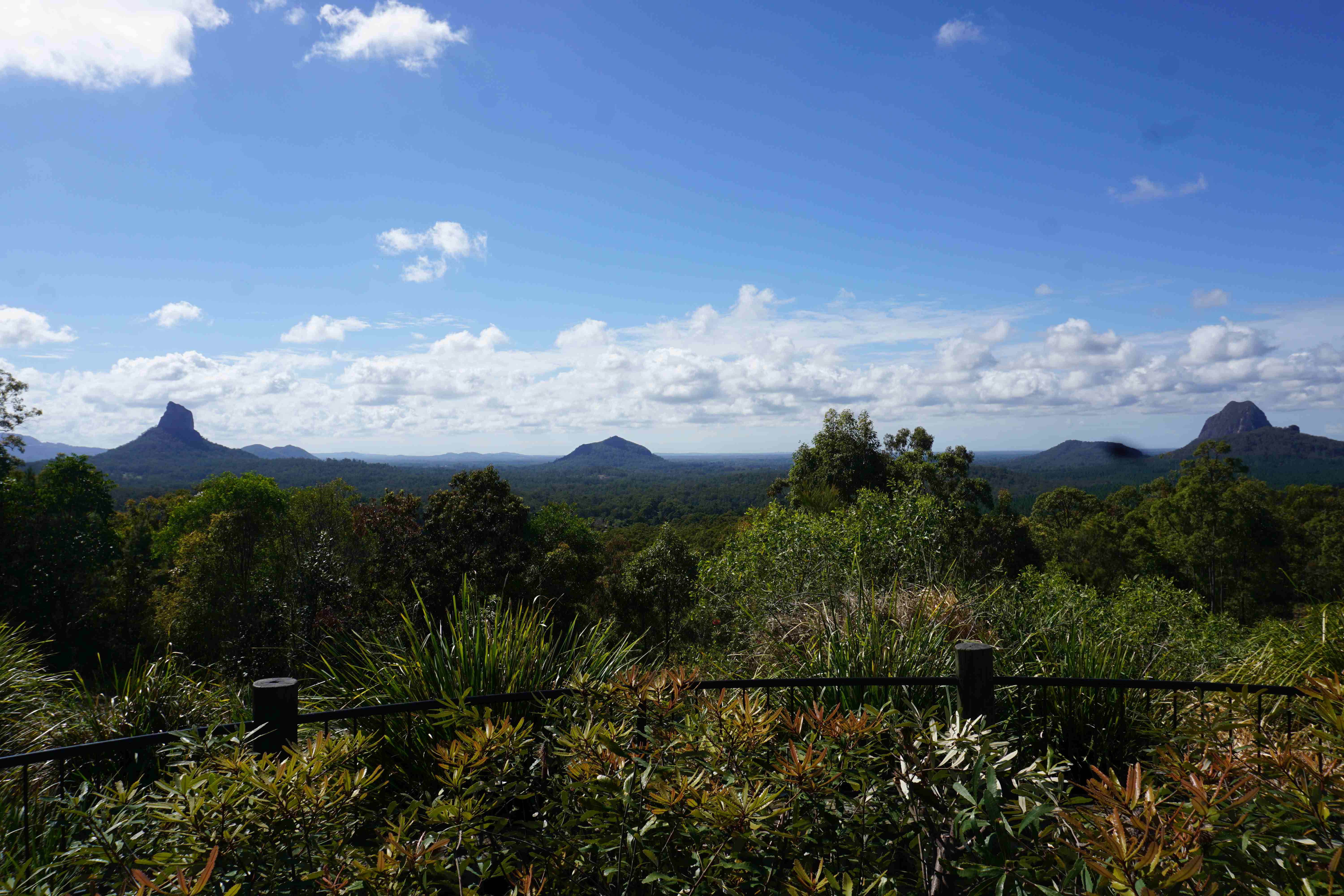
Did you know there are active volcanoes on mainland Australia? In addition to the two underwater seamount chains being mapped by the RV Investigator, there is a chain of volcanoes running the length of the Australian east coast that formed at the same time. Prior to the voyage, two of our team members spent three weeks sampling these volcanoes. The hope is that we can analyse both the continental and offshore rocks to compare the chemistry of the lava which was being erupted in each case. This should hopefully tell us where exactly the lava came from and if there is any connection between the three chains. Fieldwork began in Sydney followed by a long drive north to Cairns with numerous excursions into central Australia. With a total distance of over 6500 km, the pair are now enjoying some drive-free time on the ship (phew!). A total of 17 volcanic provinces were sampled from coast to the mountaintops. One of the most well known examples of these volcanoes is the iconic Glasshouse mountains visible from the Steve Irwin Highway in southern Queensland.
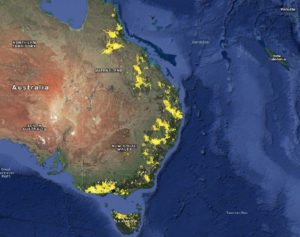
Map of the three volcanic chains, the Tasmantid seamounts, the Lord Howe seamounts and the East Australian continental chain in yellow.
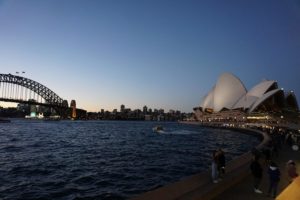
Sydney Harbour at sundown.
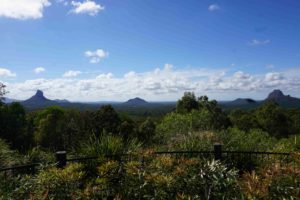
The Glasshouse Mountains, a classic example of volcanism in eastern Australia. Much of the basalt from these volcanoes has been eroded away leaving prominent plugs of more weather-resistant rock.
Sampling began in central New South Wales with the collection of a rare rock type called leucitite. So named because of the inclusion of the mineral leucite which has an unusually high proportion of potassium. This is often found alongside other potassium rich minerals such as phlogopite, in the image below this is the large brown, reflective mineral making up much of the rock. The high levels of potassium suggest these volcanoes have probably been created by different processes than those contributing to the other volcanoes sampled. Geographically, these inland volcanoes sit on thicker continental crust than the volcanoes running closer to the east coast. This thicker crust is likely to have affected the chemistry of the leucitite volcanoes, leading to an unusual mineralogy. Central New South Wales itself proved a particular highlight of the journey with never ending red dirt roads, bountiful kangaroos, and wonderful sunsets.
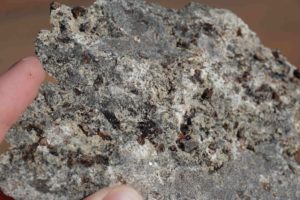
Leucitite sample from Byrock, NSW. The platy, brown mineral is phlogopite, whilst much of the light-grey colour comes from leucite itself.
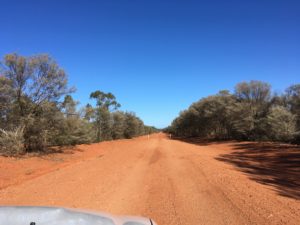
A typical dirt road in the Australian outback.
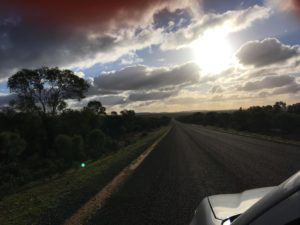
The long long road, somewhere in New South Wales.
Following on from the leucitites, basaltic rocks were collected along the coastal volcanoes from Barrington, to Brisbane, to Bundaberg and Cape Hillsborough. Basaltic lava is typically the first product to be produced by melting mantle rocks. For this reason it is fairly primitive, meaning its chemistry is very similar to the mantle from which it came. The volcanoes ranged between 4,600 and 50 million years old (both still young in geological terms!) and in some areas they appear heavily weathered. The image below shows how many rocks which are covered in brown-red weathering may actually be really fresh inside, fresh basalts being typically grey in colour. You just need to give them a fair hit with the hammer! In some areas, the volcanoes themselves created remarkable land features, particularly along the waterfall way close to Ebor. In this case, lava pooling in topographic lows cooled to produce thick masses of basalt which today make up impressive waterfalls. If you look closely you may see columns within the basalt, which develop when lava cools slowly (formerly known as columnar jointing).
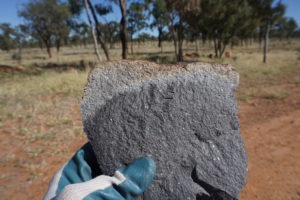
Fresh basalt showing light-grey to red-brown alteration along the rims.
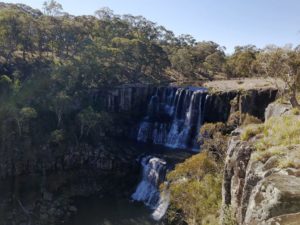
Multiple basaltic lava flows making up the scenic Ebor Falls, NSW.
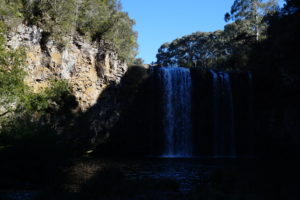
Dangar Falls, NSW, showing well defined columnar jointing.
There are lots of different types of basalt, but in hand sample they all tend to appear grey in colour and fine grained, not the most exciting to look at. However, in some cases large crystals which form as the magma (molten rock) cools may be visible within the rock. Typical examples include olivine, a bright green mineral, with a spherical shape and rich in iron and magnesium. Another example is plagioclase feldspar, a white coloured mineral generally elongate in shape. The figure below shows a plagioclase crystal in a basalt collected from Dangar Falls. The crystal itself shows a characteristic called twinning where the internal symmetry is such that one half of the crystal is black whilst the other is white. In other samples we were lucky enough to find peridotite xenoliths. Xenolith, meaning ‘foreign stone’, is a different piece of rock which gets caught up in the magma as it moves to the surface. Once the magma cools to basalt, the secondary rock can be seen sitting with it. Peridotite itself is a rock type which makes up much of our mantle, made mostly of olivine and pyroxene minerals, shown in the figure below. So in essence, this rock has directly brought mantle material up to the surface for us to analyse.
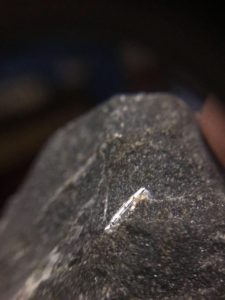
Plagioclase crystal exhibiting twinning in a fine grained basaltic rock.
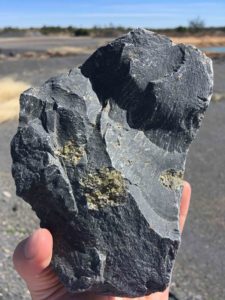
Basaltic rock containing xenoliths of peridotite. The peridotite itself contains coarse crystals of green olivine and black pyroxene.
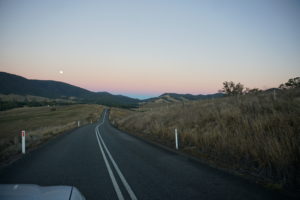
A sunset drive across Barrington Tops National Park.
The final week focused on collecting samples from the very north of Queensland. The volcanoes here were erupted as recently as 7000 years ago, meaning they are technically still active. Here, the shape of the volcanoes themselves make up an incredible land form know as lava tubes. Lava tubes are natural phenomenon that form when lava, as it flows through the valleys, hardens on top to create a tube through which the rest of the lava flows. These tubes can reach up to several kilometres in length and in northern Queensland we actually find the worlds widest lava tubes at the Undara volcano!
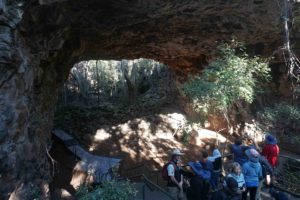
Lava tube from the Undara Experience in northern Queensland.
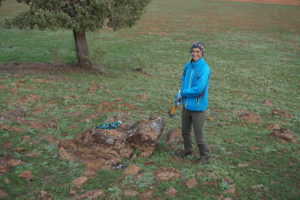
Aki hammering away at a small outcrop of leucitite near Lake Cargelligo, NSW.
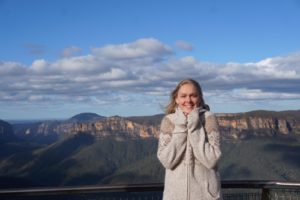
Amelia posing for a very chilly picture during a stop-off at the Blue Mountains National Park.
Along with the help of park authorities and friendly farmers, we were able to collect some great samples from eastern Australia that, once analysed, should provide vital information on how these volcanoes came to be here. It didn’t hurt that the scenery and wildlife were so spectacular along the way…

Coffs Harbour beach, NSW.
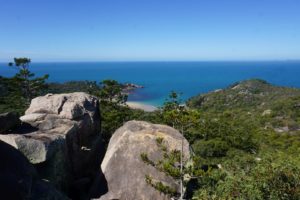
Magnetic Island, Queensland.
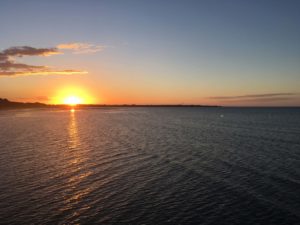
Hervey Bay, Queensland
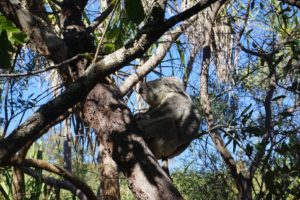
Napping koala, Magnetic Island.
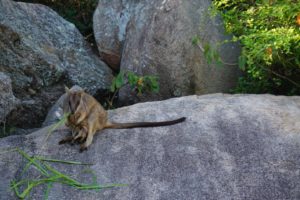
Rock Wallaby, Magnetic Island.
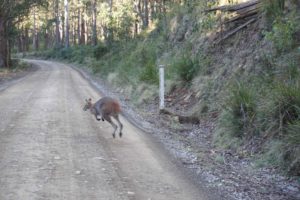
Kangaroo, Barrington Tops NP.
So if you ever drive Australia’s east coast, amongst the beaches and mountaintops, make sure to look out for some volcanoes!…




Recent comments